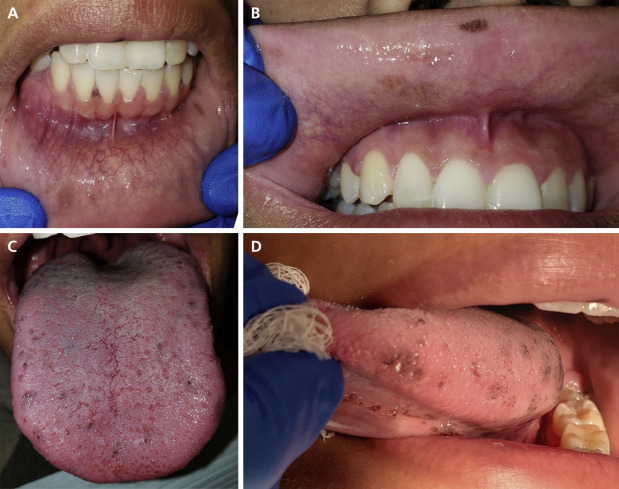To view the full text, please login as a subscribed user or purchase a subscription.
Click here to view the full text on ScienceDirect.
A 19-year-old woman was referred to the Oral and Maxillofacial Pathology Resident Clinic at Northwell Health Long Island Jewish Medical Center with a primary symptom of “dark spots on my tongue and lips.” She initially reported a noncontributory medical and social history and was not taking any medication at that time nor had any allergies to report. On further questioning, the patient revealed a prior diagnosis of a condition involving multiple bones, including her femur, humerus, maxilla, and mandible.


